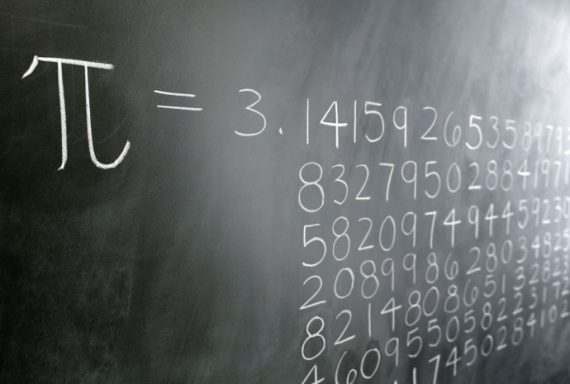Pi Day 3.14.15
Cornell math prof Steven Strogatz is very excited about Pi day.
Cornell math prof Steven Strogatz is very excited about Pi day.
Every March 14th, mathematicians like me are prodded out of our burrows like Punxsutawney Phil on Groundhog Day, blinking and bewildered by all the fuss. Yes, it’s Pi Day again. And not just any Pi Day. They’re calling this the Pi Day of the century: 3.14.15. Pi to five digits. A once-in-a-lifetime thing.
I’m dreading it. No hope of solving any equations that day, what with the pie-eating contests, the bickering over the merits of pi versus tau (pi times two), and the throwdowns over who can recite more digits of pi. Just stay off the streets at 9:26:53, when the time will approximate pi to ten places: 3.141592653.
Pi does deserve a celebration, but for reasons that are rarely mentioned. In high school, we all learned that pi is about circles. Pi is the ratio of a circle’s circumference (the distance around the circle, represented by the letter C) to its diameter (the distance across the circle at its widest point, represented by the letter d). That ratio, which is about 3.14, also appears in the formula for the area inside the circle, A = πr2, where π is the Greek letter “pi” and r is the circle’s radius (the distance from center to rim). We memorized these and similar formulas for the S.A.T.s and then never again used them, unless we happened to go into a technical field, or until our own kids took geometry.
So it’s fair to ask: Why do mathematicians care so much about pi? Is it some kind of weird circle fixation? Hardly. The beauty of pi, in part, is that it puts infinity within reach. Even young children get this. The digits of pi never end and never show a pattern. They go on forever, seemingly at random—except that they can’t possibly be random, because they embody the order inherent in a perfect circle. This tension between order and randomness is one of the most tantalizing aspects of pi.
[…]
pi is intimately associated with waves, from the ebb and flow of the ocean’s tides to the electromagnetic waves that let us communicate wirelessly. At a deeper level, pi appears in both the statement of Heisenberg’s uncertainty principle and the Schrödinger wave equation, which capture the fundamental behavior of atoms and subatomic particles. In short, pi is woven into our descriptions of the innermost workings of the universe.
So that’s what I’ll be celebrating when the clock strikes 3.14.15 9:26:53—safe in my burrow, waiting out the mayhem. See you next year.
9:26:53 is just minutes away. Either that or it’s a little more than 12 hours away. Unless you’re in a different time zone.
UPDATE: And, as Doug Saunders notes, “Pi Day” is completely an artifact of American date conventions:
(Worth noting that there will never be a Pi Day outside the United States unless we all develop a 14-month calendar or a 31-day April)
— Doug Saunders (@DougSaunders) March 14, 2015


Did the world survive? Just askin’
Or half tau day for those of us aware of the superior circle constant.
@Stormy Dragon: Came here to say that, and to complain about our ridiculous date format convention, which was also covered in the update. So not much more to add in the negative column.
But somewhere local, they had a Pi day run, where you ran 3.14 miles and ate pie and had pie smashed in your face at the finish line and stuff. Sounded like a lot of fun.
July 22 is Pi day outside the US, since 22/7 is pretty close to Pi. And after all, 3.15159 is also only “pretty close to Pi”.